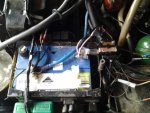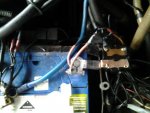harrisson_citroen
Frogs Parking Only - All others will be toad.
VIP Paid Subscriber
1000+ Posts
Fellow Frogger
Aw.... come on Rod,
Of course I connected it to the battery. I was actually now considering - under your expert guidance- changing my name to harrisson_electric
Of course I connected it to the battery. I was actually now considering - under your expert guidance- changing my name to harrisson_electric
Yah- touching that wire to ground should get some sort of reaction, even if it is just the solenoid itself actuating. Just touch it briefly to see if you get the characteristic 'clonk'.
The solenoid you have installed right now- is that the new one? Even dumber question- you do have it mounted to the battery?







